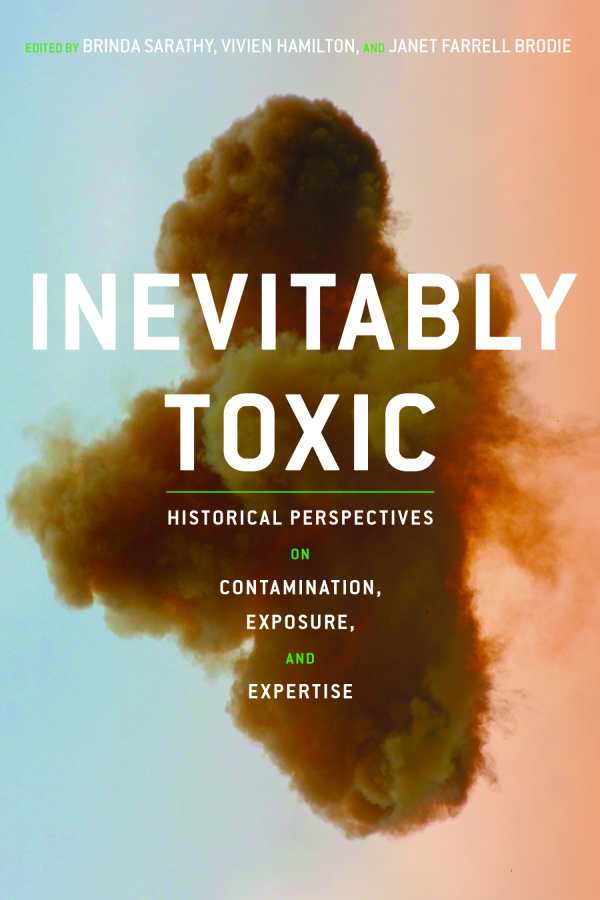Inevitably Toxic
Historical Perspectives on Contamination, Exposure, and Expertise
Most of the ten essays collected in Inevitably Toxic are based on papers presented at Claremont College’s “Contested Expertise, Toxic Environments” workshop in Fall 2015. Reading them is like attending an academic conference and absorbing the latest insiders’ insights into radiation events and industrial toxins.
What’s so pernicious about these environmental threats is their hidden nature: “In almost all of our cases,” editors Brinda Sarathy, Vivien Hamilton, and Janet Farrell Brodie write in their introduction, “the toxicity remains invisible, with health effects sometimes manifesting immediately, and sometimes after long periods of chronic exposure.”
The authors consider the risks and containment strategies for situations ranging from the West Texas petrochemical industry to an Arctic “dumpcano” in Nunavut territory. Historical perspective is gained by investigating the evolving X-ray protection guidelines in American hospitals and radiation sickness among atomic bomb survivors in Japan.
Four of the chapters are specific to California. From neighborhood oil drilling in Los Angeles to the decontamination of radioactive warships at a navy lab in San Francisco, the studies present the ongoing challenges posed by toxicity, and the range of community responses.
Essays vary in terms of their appeal to a general audience. One piece on water pollution control in Southern California in 1947–55 feels rather niche, whereas the study of herbicide use against Douglas Fir tussock moth caterpillars in the Pacific Northwest is written in a more engaging style than many of the rest.
The editors believe that the dedicated fieldwork and intensive research represented by these case studies will enable the scientific community to be better prepared for any future threats: “We might move ahead with greater caution, anticipating and planning for toxic substances rather than reacting to an environmental or health crisis already underway.”
Reviewed by
Rebecca Foster
Disclosure: This article is not an endorsement, but a review. The publisher of this book provided free copies of the book to have their book reviewed by a professional reviewer. No fee was paid by the publisher for this review. Foreword Reviews only recommends books that we love. Foreword Magazine, Inc. is disclosing this in accordance with the Federal Trade Commission’s 16 CFR, Part 255.

